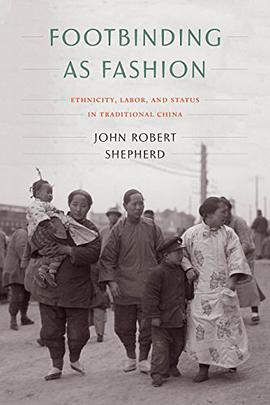Footbinding as Fashion
Douban
Ethnicity, Labor, and Status in Traditional China
John Robert Shepherd
Übersicht
Previous studies of the practice of footbinding in imperial China have theorized that it expressed ethnic identity or that it served an economic function. By analyzing the popularity of footbinding in different places and times, Footbinding as Fashion investigates the claim that early Qing (1644-1911) attempts by Manchu rulers to ban footbinding made it a symbol of anti-Manchu sentiment and Han identity and led to the spread of the practice throughout all levels of society. Detailed case studies of Taiwan, Hebei, and Liaoning provinces exploit rich bodies of previously neglected ethnographic reports, economic surveys, and rare censuses of footbinding to challenge the significance of sedentary female labor and ethnic rivalries as factors leading to the hegemony of the footbinding fashion. The study concludes that, independently of identity politics and economic factors, variations in local status hierarchies and elite culture coupled with status competition and fear of ridicule for not binding girls' feet best explain how a culturally arbitrary fashion such as footbinding could attain hegemonic status.
contents
Cover
Title Page, Copyright, Dedication
pp. i-vi
Contents
pp. vii-viii
List of Illustrations
pp. ix-xii
Acknowledgments
pp. xiii-xiv
Abbreviations
pp. xv-xvi
Chronologies
pp. xvii-xviii
Notes on Usage
pp. xix-xxii
Introduction: Seeking Status, Avoiding Shame
pp. 3-9
Chapter 1. The Qing Conquest and Footbinding
pp. 10-31
Chapter 2. The Taiwan Census of 1905
pp. 32-50
Chapter 3. The 1915 Prohibition
pp. 51-59
Chapter 4. Footbinding for Marriage
pp. 60-69
Chapter 5. Regional Variations among the Hoklo Fujianese
pp. 70-98
Chapter 6. Women’s Labor in Agriculture
pp. 99-112
Chapter 7. Women’s Labor in Handicrafts
pp. 113-143
Chapter 8. Bannerwomen and Civilian Women in the Northeast
pp. 144-163
Conclusion: The Tyranny of Fashion
pp. 164-176
Chinese Character Glossary
pp. 177-180
Notes
pp. 181-214
References
pp. 215-240
Index
pp. 241-252
Back Cover